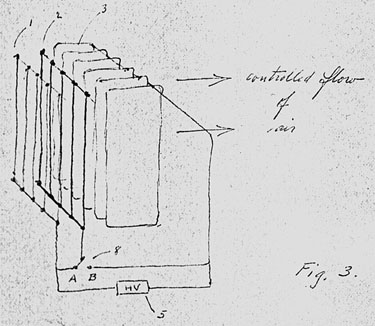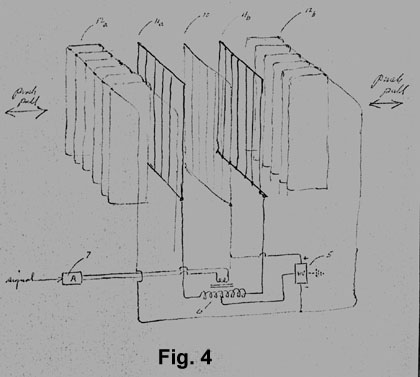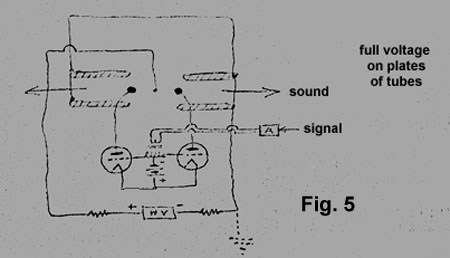(Return to Index Page) A Discussion on the Validity of a Patent Copyrighted © by The Townsend Brown family. All rights reserved.

(A) Pat. No. 2,949,500 - "Electrokinetic Apparatus" (B) Pat. No. 3,018,394 - "Electrokinetic Transducer"Discussion: 1) In (A), a two-element (2 electrode) structure is shown whereby electrical energy is converted directly into kinetic energy without moving parts. The device has immediate commercial application as a fan which is completely soundless, also at the same time as an electrostatic precipitator. 2) While the allowed claims in this patent seem adequate, there are certain teachings in the specifications of Bennett U.S. No. _________ relative to the arrangement of a wire electrode and large flat plates which may tend to compromise this coverage. This possibility should be studied. It is clear, however, that the Bennett device is not suitable or useful as a precipitator. As a matter of fact, its use in dust-laden air seems to be specifically precluded in the specifications. 3) While (A) does not mention electrostatic precipitation, the device does operate very effectively as a precipitator. Its advantage over all other electrostatic precipitators (such as the Westinghouse "precipitator" or the like) is that it is self-propelling and, of course, soundless. 4) In (A) there is no reference to cleanable, removable or disposable plates and this is a serious oversight. One of the features of the present application should, therefore, cover this point. It is believed that metallized paper (or inexpensive plastic) plates would represent a patentable claim. 5) In (B) the same basic two-electrode structure shown in (A) is modulated to serve as an electro-sonic transducer. An alternating current (signal) is superimposed upon the direct current (plate) to produce pulses of air, or sound waves. The device is intended to operate either as a loudspeaker or the inverse, as a microphone. The disadvantage of the system is that especially with a large loudspeaker, the entire (plate) current must be modulated by the signal. This requires and excessive amount of signal energy and expensive amplifiers. 6) In the present application, a third element is included as a "control grid" in much the same manner (and for the same reason) as the grid of a triode. In this case, however, the grid controls the emission of the fine-wire anode in the direction of the plates (cathodes). This emission causes the dielectric fluid (air) to move in the direction of the divergence of the dielectric field. The polarity arrangement may be reversed so that the air flows from negative to positive, but this usually results in "beaded" negative corona around the fine wire which causes ozone and is noisy. The smooth and uniform positive corona is preferred.






